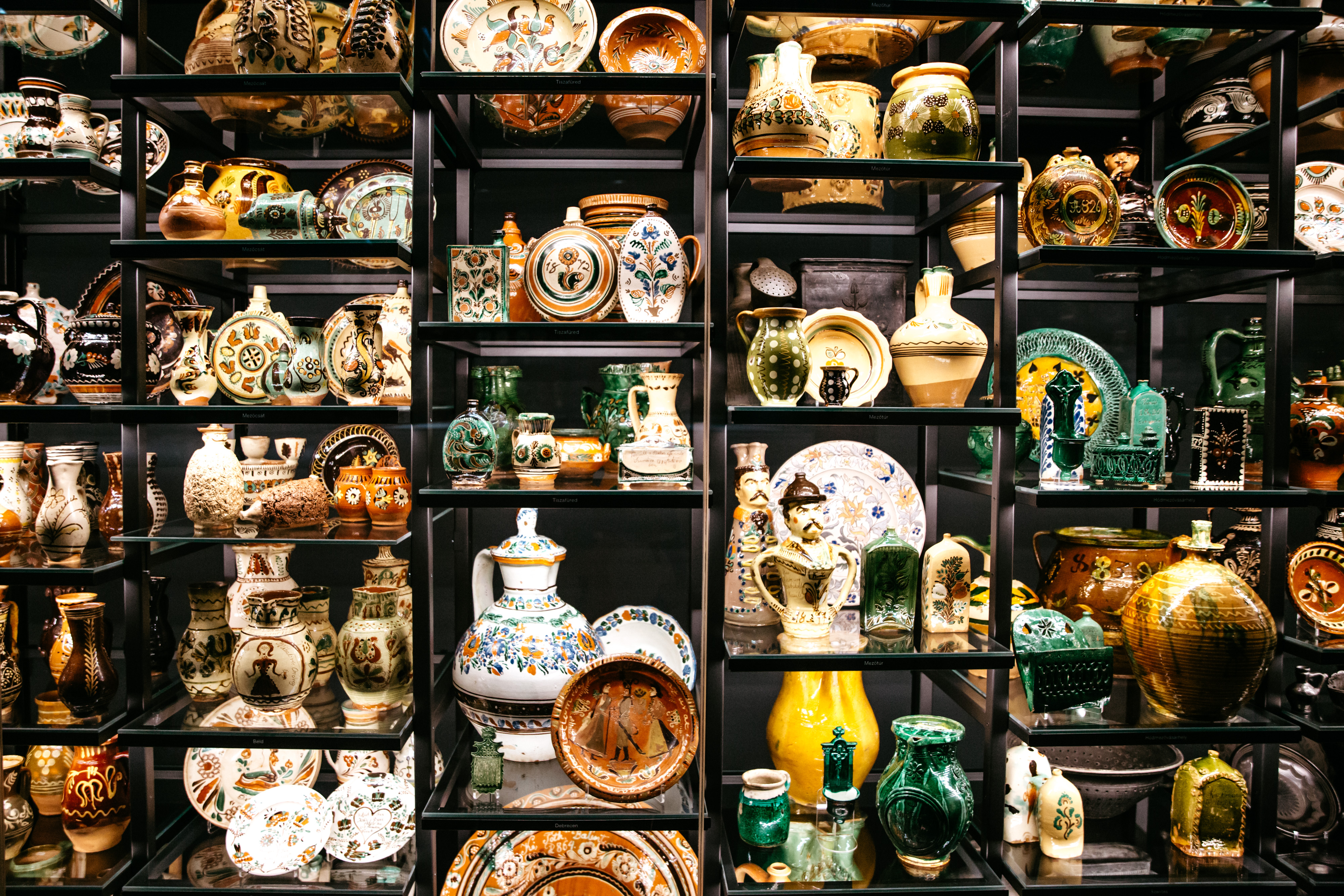When talking about the Museum of Ethnography, many will
first think of Hungarian folklore and items of folk art, even though it has a renowned
international collection, which includes not only European pieces but also objects
from Oceania.
Moreover, in addition to archaeological finds and ethnographic
material, it also displays contemporary objects. And this is why Ceramics
Space is exciting, because even though visitors do see ceramics, it still
depicts everything the museum does.
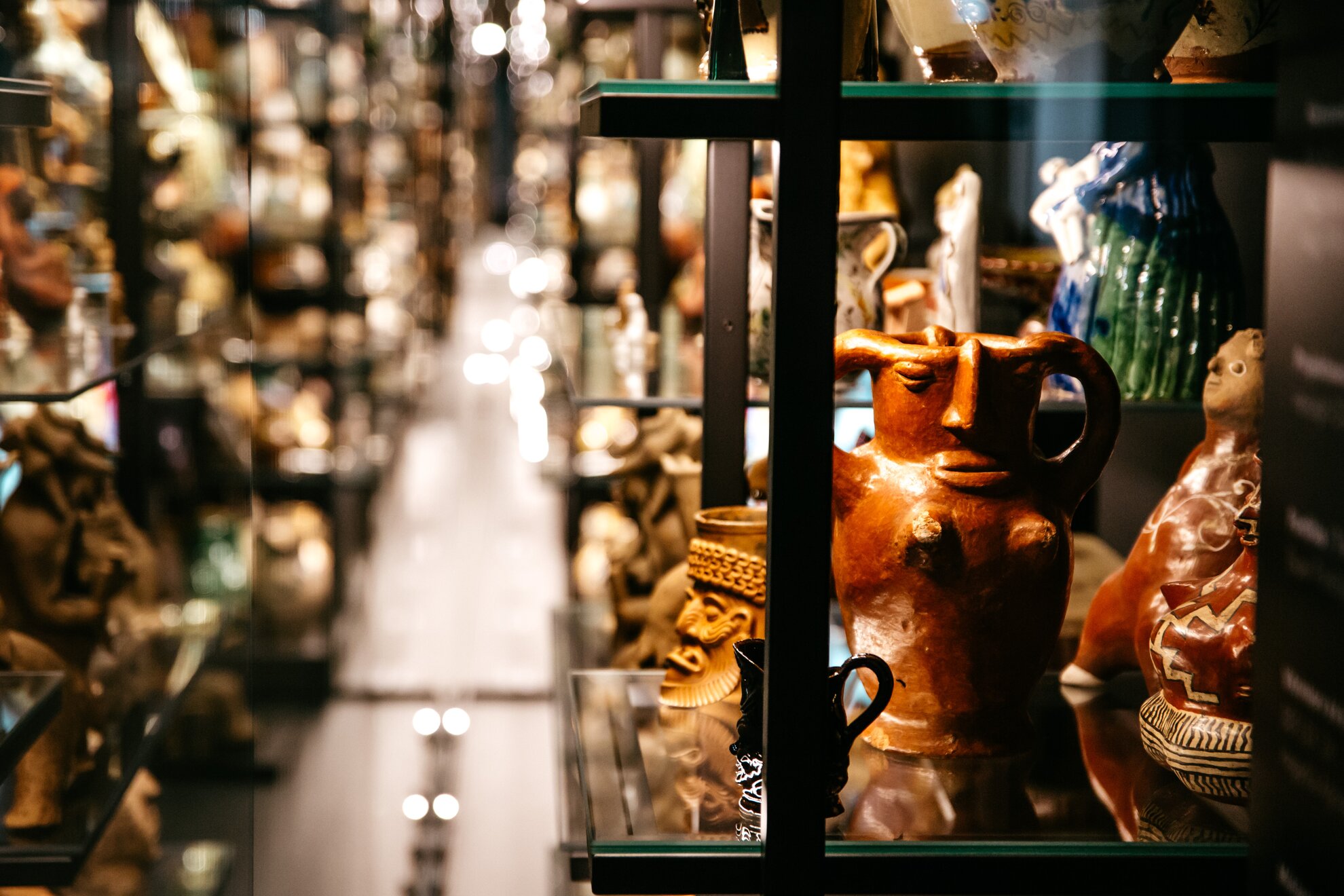
Ceramics are one of the most common types of artefact found in the Ethnographic collection. In terms of pure numbers, there are more than 35,000 ceramics from five continents, a slice of which is on display in the free-to-visit visual space. Compared to the overall collection, almost 4,000 pieces appears quite modest, but the items are interesting and merit further investigation.
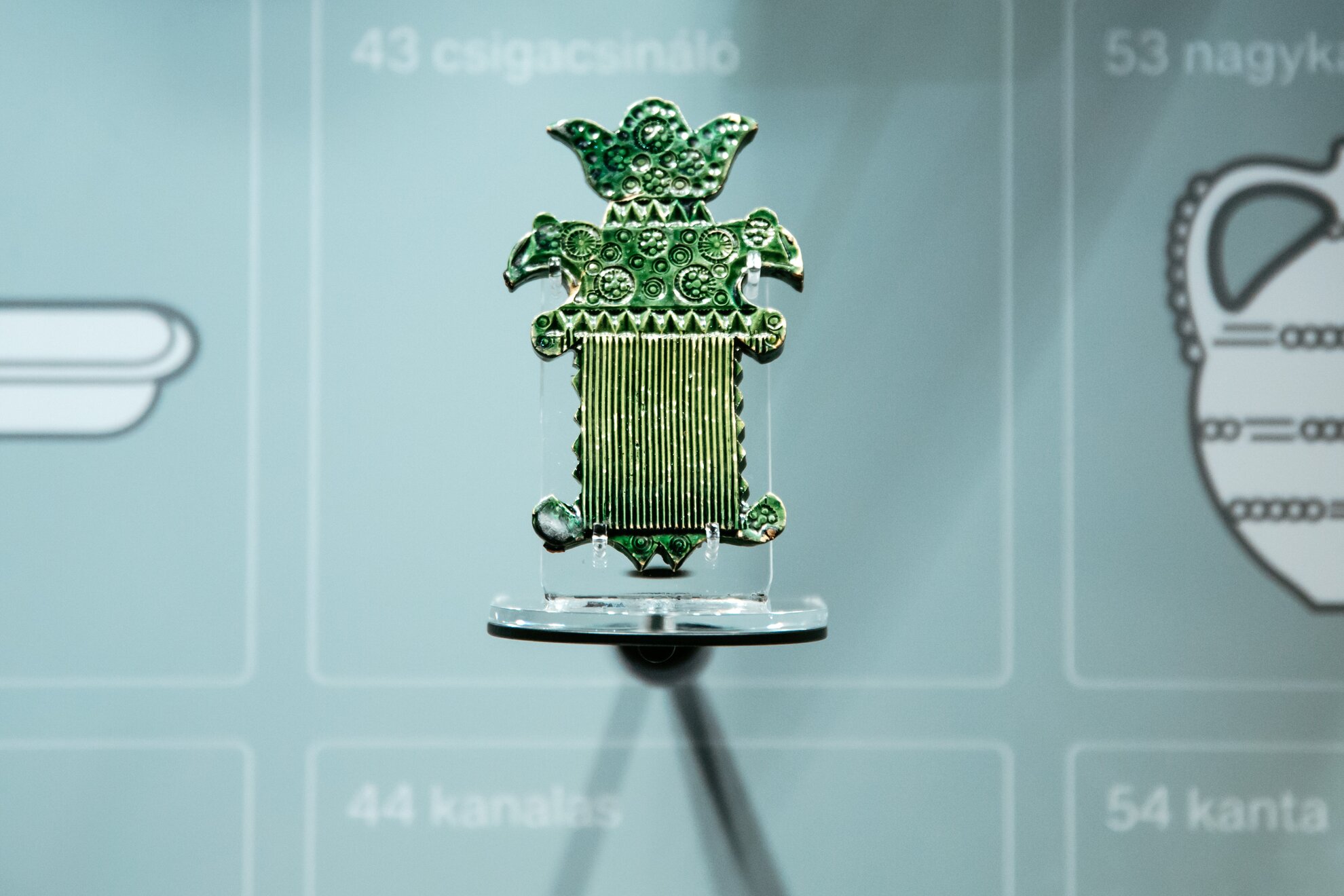
It’s worth taking a leisurely hour to look at it,
because that way you can spot such exciting objects as Haban pottery, tobacco
holders decorated with scary creatures, a North-African octopus pot, Hungarian Miska
jugs, book boxes, a Mexican tree of life and, a real favourite, a board for
cutting csiga pasta.
At first, the amount of plates, mugs, pans, jugs
and pitchers may be somewhat overwhelming, but there is a serious system behind
the arrangement of colours and shapes.
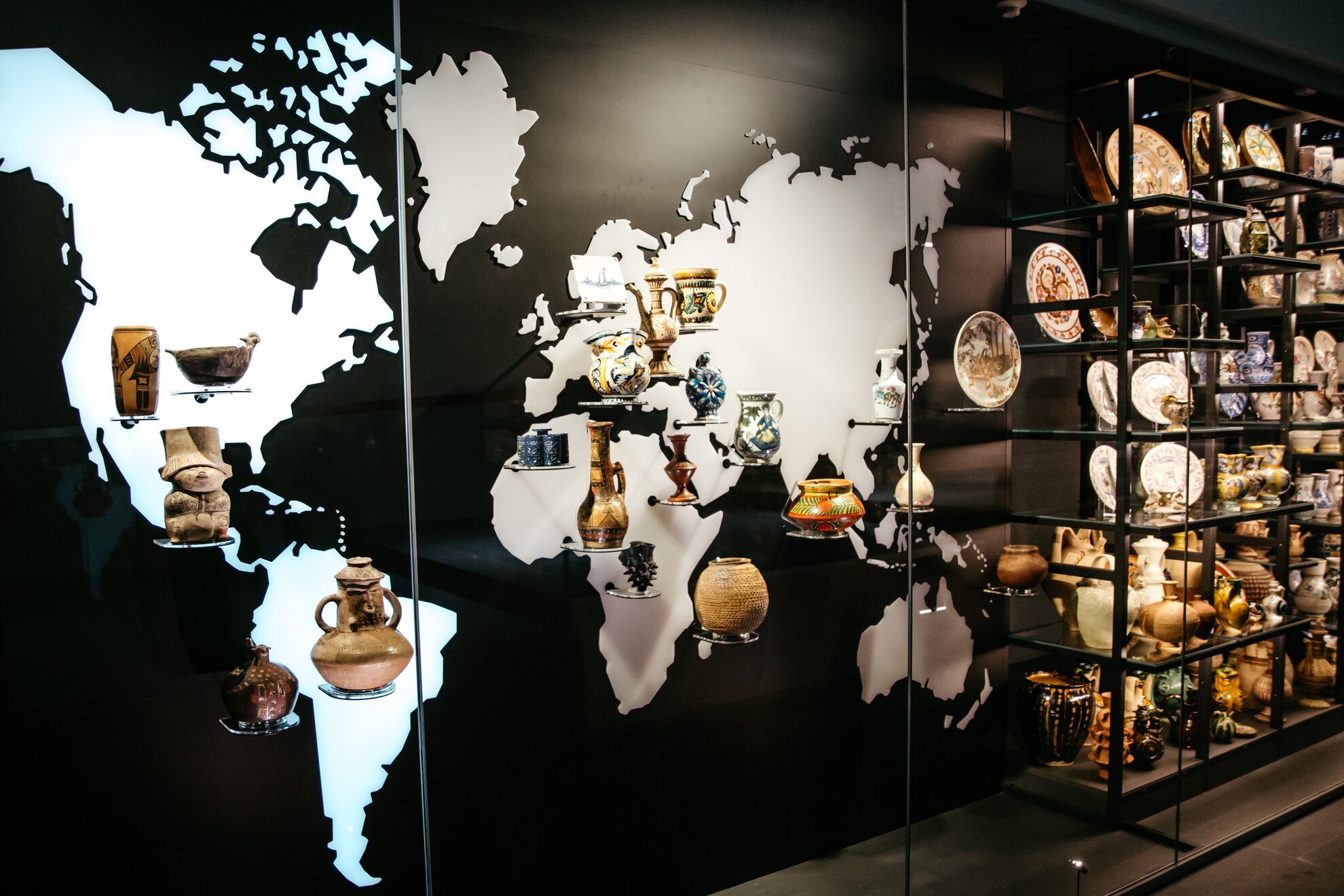
On either side of the stairs leading to the main exhibition, Ceramics Space is divided into two parts, inter-related like the human brain. Just as the left half is responsible for logical systematisation, abstract concepts and the use of language, so this side of the exhibition – Ceramics of the World – you see the organisation of rational museologists. By contrast, the right side, Ceramic Worlds, presents the diversity of ceramics from a sensory perspective.
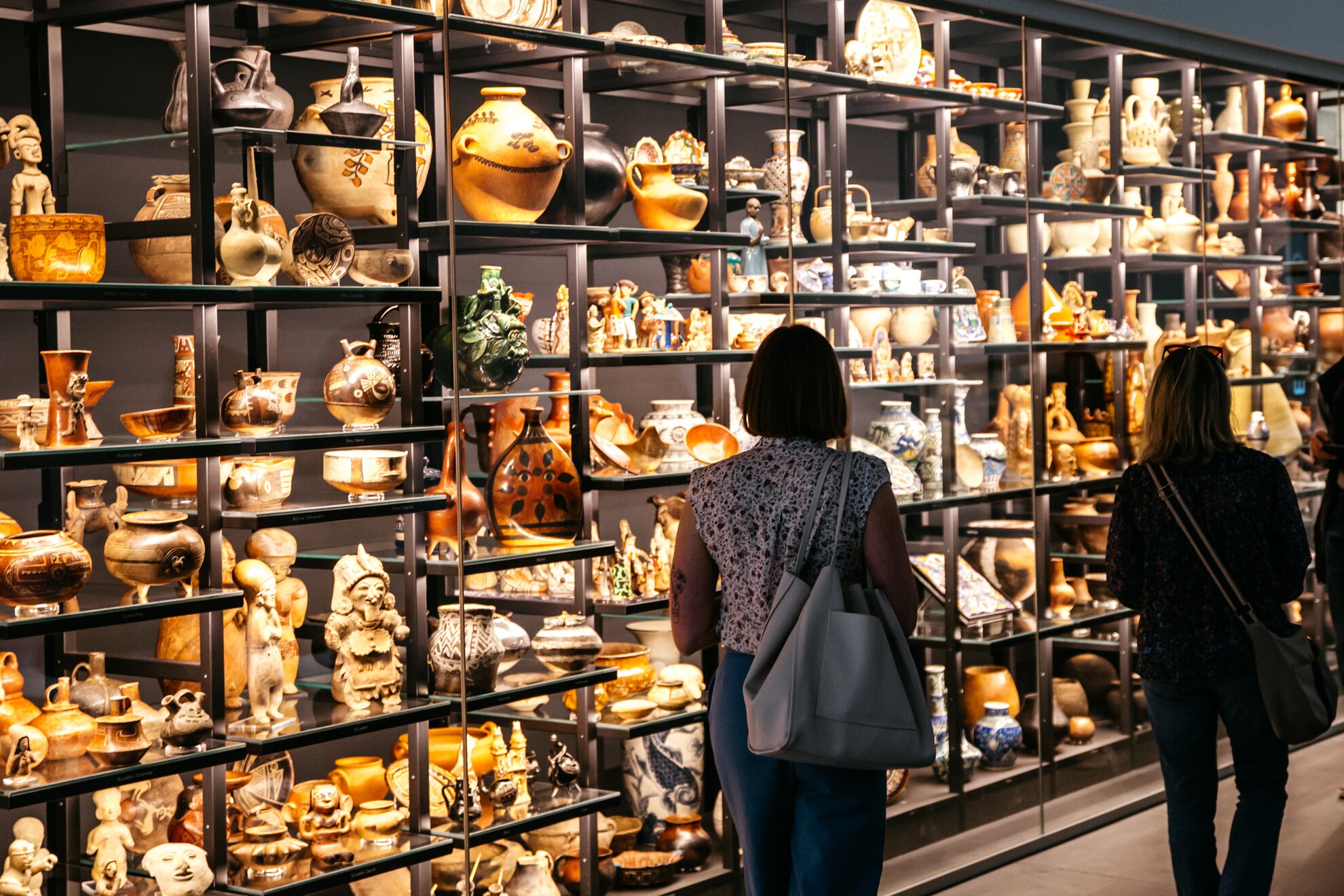
The items in the first actually shows how
museologists think about how exhibition materials are organised, so here, too, the
pottery is ranked according to spatial location, function and typology.
Before
diving into the pieces of the American Archaeological Collection, it’s worth
staying with the first two exhibits that demonstrate this thinking: a
19th-century, 100kg, archaic Indian water container and a tiny, glazed, ornate
jug alongside each other. It’s also shown how such objects of daily use became
tourist attractions.
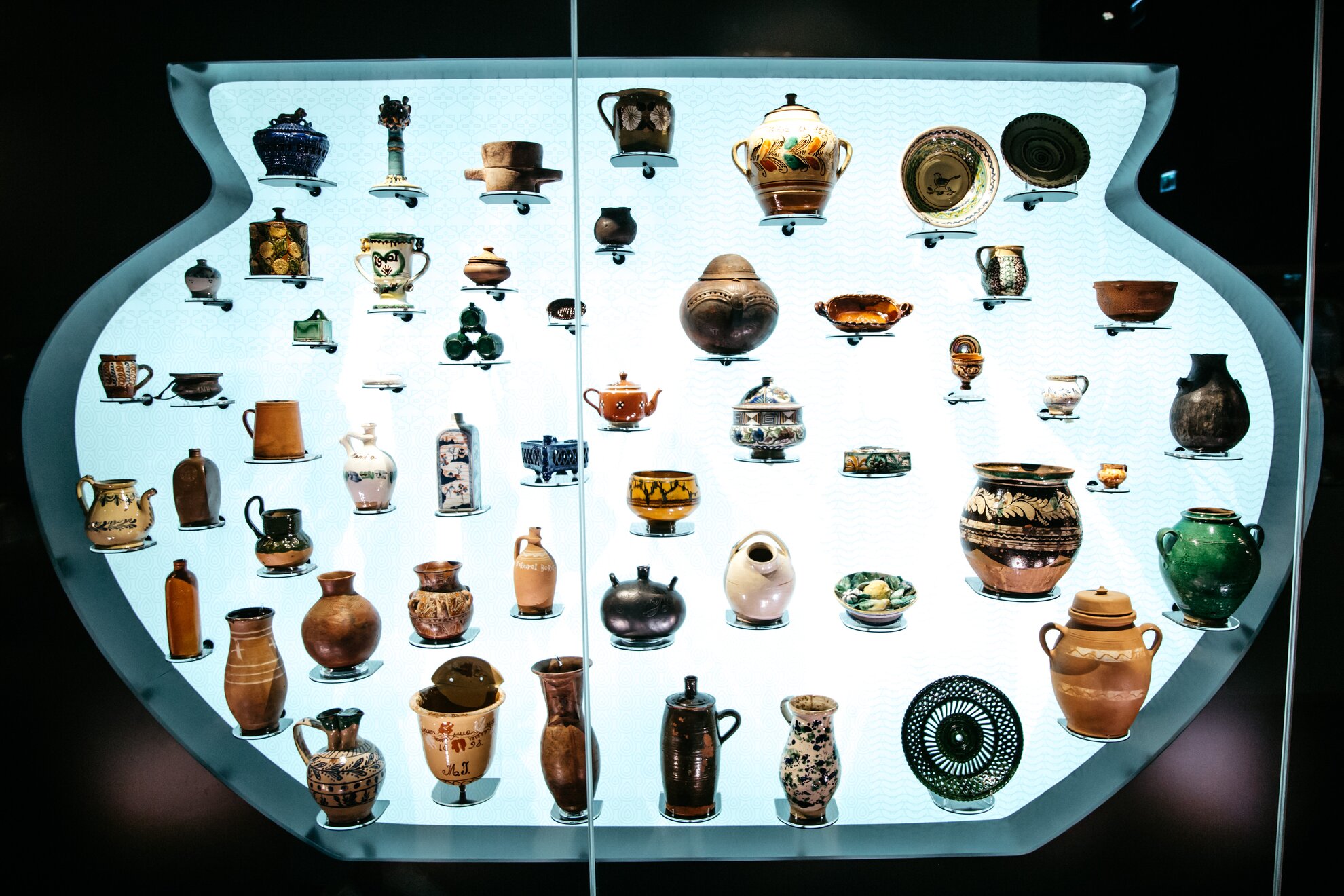
The objects in the American Archaeological
Collection amaze you as you can hardly believe that such elaborate and finely
worked ceramics could have been made without a potter’s wheel, but by hand or a
mould, at least before the arrival of Columbus.
Here you find one of the oldest
objects in the museum, a tiny female statue, probably from around 2,600 BC, but
you can also see various shamanic figures, Mayan pots and clay dolls. These are
now mostly made as tourist souvenirs, but originally they were children’s toys that
prepared adolescent girls for female roles. After the Discovery of America,
pottery also changed, with new techniques, shapes and decorative styles
prevalent as they were in Europe.
Using and decorating pottery
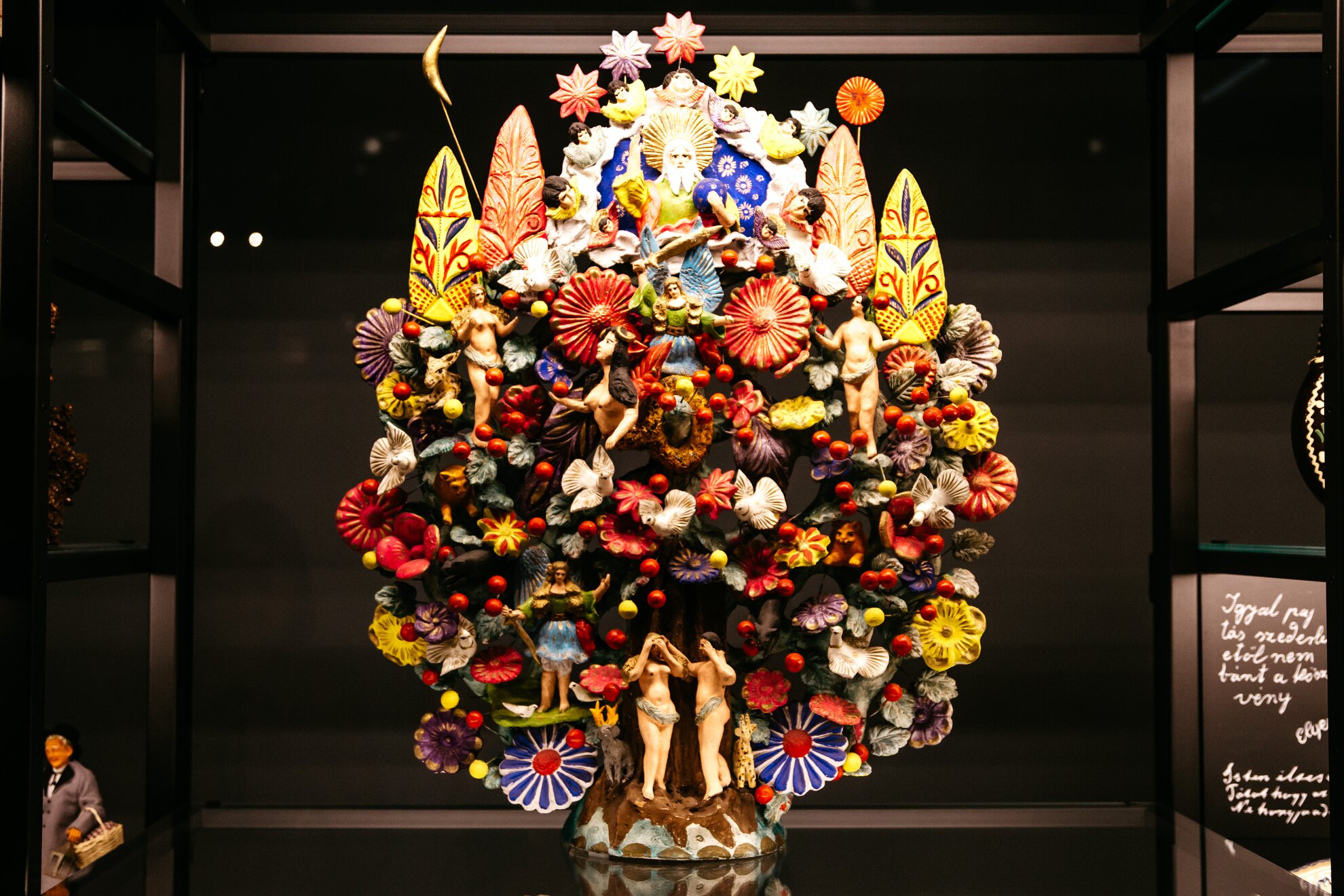
Ceramic Worlds presents the relationship between man
and ceramics from many aspects, not only the exhibited objects, but also the brain
map and a short film to enlighten visitors. László Kovács, a folk craftsman and
potter, presents the most common decorations and technical techniques found in
the Carpathian Basin.
Pottery is typically a male craft, so female potters,
such as the Berbers of northern Algeria or Magyarhertelend in Baranya County
were rare. There women made pottery with wheels and sausage-making techniques.
Looking at the repository, you quickly realise why there were few: potters did
everything from mining the clay to making the glaze. A model of a pottery
workshop in Hódmezővásárhely shows the environment in which they worked.
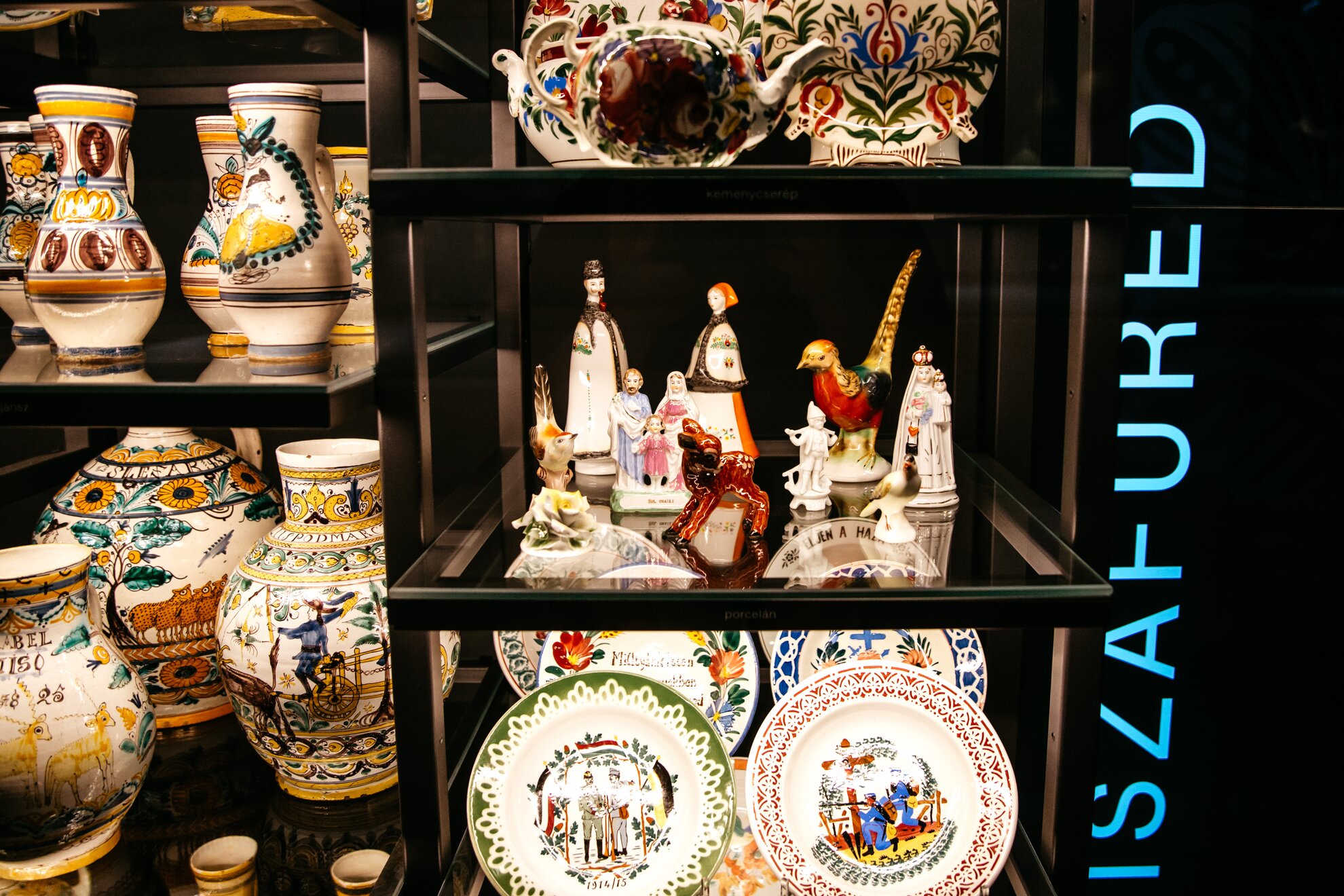
The image of glazed pottery seems eternal, even
though it only developed in the 16th and 17th centuries. It spread in the
Carpathian Basin in the 16th century, and no matter how beautiful the splendours
of blue may be, the colour containing cobalt oxide is the most expensive to
produce.
Even more interesting is the black, which is officially called
reduction-firing ceramics: this is made by putting various types of incense into the
furnace in the last phase of firing, for which the vents are plastered to form
soot, which is then absorbed into the ceramics.
We could list far more curiosities on display at Ceramics Space, but it might be more exciting for you to discover yourself the classic Hungarian Miska jugs, the cooking pots, the Japanese and Chinese styles, and the humorous messages people have written on each bottle.
Venue information
Ceramics Space
Museum of Ethnography
1146 Budapest, Dózsa György út/Ötvenhatosok tere
Facebook
Open: Tue-Wed & Fri 10am-6pm, Thur 10am-10pm, Sat-Sun 10am-9pm
